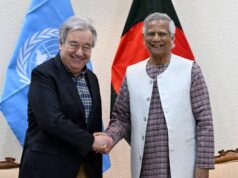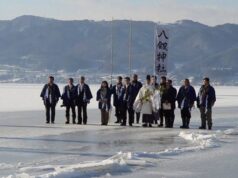The inside story : Mashkoh– Kargil as I saw it # 15
By
Brig Umesh Singh Bawa Vrc, SM

A good attack plan must enable a high probability of success and reduce as much risk as possible. After great deliberations, the plan was formulated that was simple and easy to understand and execute. The battalion plan of attack to capture Pimple Complex was code-named “Operation Jat Balwan’.
Phase 1: A company under Major RK Singh to commence the attack at 2000 hours 04 Jul and capture Pimple1 by 0500 hours 05 Jul and D company under Major Deepak Rampal to commence attack and capture Whaleback by the same time.
Phase 2: C company under Major Ritesh to commence the attack at 2000 hours 05 Jul and capture Pimple 2 by 0500 hours 06 Jul.
Reserve: B company under Major Punia to be a reserve.
Battalion Firebase: To be established by Major Padam to support all phases of attack
Battalion firebase
We had established a battalion firebase at a vantage Point (approximately 800 meters south of Pimple 2). Major Padam Janghu was made the firebase commander. We had deployed anti-tank guided missiles (2 x Milan and 2 x Faggot), medium machine guns (06), automatic grenade launchers (02) and 84 mm rocket launchers (06) for fire support. Dumping of ammunition in the firebase was a herculean task. It was completed in six nights by 148 soldiers (60 from 18 Garhwal,48 transport drivers and battalion tradesmen and 40 young soldiers from the regimental centre). Twelve thousand rounds of MMG belted ammunition, 9000 grenades for AGL, 130 rockets for 84 mm RL and 20 missiles were dumped in the firebase.
Administrative nightmare
There was another kind of war that had to be fought- the administrative battle! There were no porters, no mules and no tracks. There was no water on the top and had to be carted up in plastic jerrycans man-packed. To fight the chilly weather, men required cold climate select clothing. It needed at least eight men to carry a battle casualty. A ten-meter trudge would leave the soldiers panting for breath. On the whole, four soldiers were required to support one soldier.

Planning for the attack at battalion level at the height of 16000 feet posed peculiar logistics problems, which proved to be a nightmare and had to be addressed meticulously. There was a need to work out the requirements of ammunition, rations, water, medical and select clothing for troops. It was a herculean task to stage these items forward and build them up at the designated places in the tactically acceptable time frame. Using soldiers with a limited carrying capacity of 15 Kgs at the height of 16000 feet was no mean task. Therefore, there was a need for unconventional planning and creative execution.
Assaulting troops were made to carry only one weapon scale of ammunition in specially designed pouches worn on the chest providing partial protection to the vital organs against fragments and bullets. Balance of unit reserve and one-second line ammunition was built up using the soldiers for two nights in the near vicinity of the staging areas for each company, including reserve company. There was a need to make the assaulting troops self-contained for food for at least 96 hours. The troops carried cooked food for 48 hours; composite rations for 24 hours; survival rations for 24 hours.
The snow was available only in the highest reaches and mountain tops which were under enemy control. In the vicinity of the assigned battalion objective, there was no water existing. Therefore, there was a requirement to build up water for troops for at least 96 hours. Building up water at a rigid scale of 5 litres per man per day was also an unachievable task due to the lack of porters. Therefore, it was decided to build up water at the scale of one litre per man per day. Lightweight plastic jerrycans of 10 litres capacity were provided. Forty jerrycans of water per company were built up in the vicinity of the company staging areas for four nights.
Recce by commanders at all levels
The battalion firebase was located at a vantage point from where all the company objectives could be seen. Three days before the assault, we sent all commanders down to section commanders to the battalion firebase, from where they could have a good look at the objective. Of course, all the movement was at night. It took almost six hours to reach this point. We all moved up one night before the final D day and established a battalion firm base approximately 1000 meters short of the objective. It was done so that we get the better part of the night for fighting on the objective. The climb was arduous and challenging with no foot tracks available. The rolling loose stones made the ascent of the following echelons even more difficult. We spent the better part of the night and the whole day in open, taking shelter behind the boulders and rocks. The mountains were barren and devoid of any cover.

Motivating troops
Before moving up to our firm base, I had gathered all my troops together in the Mashkoh base to give them a pep talk. It is essential to pep up the emotions of the soldiers to raise their morale and motivation for the impending task. I told them, “It is a dream of every soldier who dons a uniform, to see a wartime action in his lifetime. When I was a youngster, I used to wonder if I would ever participate in a war. Only the lucky ones get this chance. We must not lose it. In war, there are only winners or losers; there is no runner’s up. God has given us a chance to win the battle and create history so that our future generations remember us for our courage and bravery. If we do not carry out our task properly, then our future generations will curse us and brand us as cowards. I know that the task at hand is not easy, but for the Jats, when the going gets tough, the tough get going. I know while doing our duty sincerely, some of us will lose our lives and some may become battle casualties. Everybody has to die one day, and there can be no better way of dying where you become a martyr protecting the motherland and be remembered as a brave person. It is better to take the bullet on your chest rather than on your back. I will make sure that my young officers will be the leading platoon commanders and the senior-most havildars will be the leading section commanders. And I will be there with you all through the thick and thin. I want all of you to give your 100%, and I am sure that the victory will be at our feet.” All my troops resounded the war cry of “Jat Balwan Jai Bhagwan” with a loud voice which shook the earth below us, and I am sure the enemy would have also heard it and would probably be shaking in his pants.
Battalion firm base
We had established a makeshift viewpoint near our battalion firm base. It was made by collecting few stones and placing them on three sides to create an area of 4 feet by 4 feet by 4 feet in length, width and height respectively. On the day of the assault, 04 Jul 1999 at about 1700 hours, I took my second in command and the adjutant to the vantage point to have a good view of the Pimple Complex objective, which our companies were to capture. We should have gone to the viewpoint one by one to have a look at the area, but in zeal, we all went together in that small cramped area. We were all using our binoculars to get a good view of the objective area. I am sure that the enemy was watching us similarly. Three officers together provided a lucrative target to the enemy. We also had our radio operator and runner with us, who was standing a few feet away in the open area towards our right.
A massive explosion took place very close to us. Adrenaline shot from my core, down my arms, into my hands. Seconds later, another explosion rocked the area. Somebody shouted ‘artillery fire’. Enemy, had fired artillery shells which landed very close to our viewpoint. Each massive projectile carried a large number of explosives covered in a steel jacket designed to throw jagged pieces of shrapnel in all directions, causing fatal splinter injuries. Our first reaction was to duck down within the viewing area, which was already cramped with three of us standing there. The viewpoint walls came crumbling down due to our weight. Luckily, we could survive the shelling, but our radio operator in the open area started yelling and saying that the fragment has hit him. On a general observation, it felt that there was no injury on his body due to a splinter. However, he continued to yell with pain. The adjutant scolded him for crying unnecessarily and lowering the morale of other soldiers. But he continued to scream in pain, and it was finally decided to evacuate him to the nearest medical unit for further investigation and treatment.
Evacuating a person in this type of treacherous terrain required at least eight men to carry the casualty, quite a drain on the fighting troops, but had to be done to maintain the morale of the wounded and others who may get wounded subsequently due to enemy action. We got another news of one mortar platoon guy; Sepoy Kalu Ram got hit by enemy artillery fire when he was out in the open to relieve himself. His one leg was separated from his body in that blast and was bleeding profusely. The news of losing men even before the attack had started was quite depressing. Later, after a few days, we came to know that the injured radio operator and the mortar platoon guy both died in the base hospital during treatment. The radio operator had damaged his spine due to a splinter injury. It was a sad moment for all of us, especially the adjutant, who had scolded the radio operator for making unnecessary noise.




